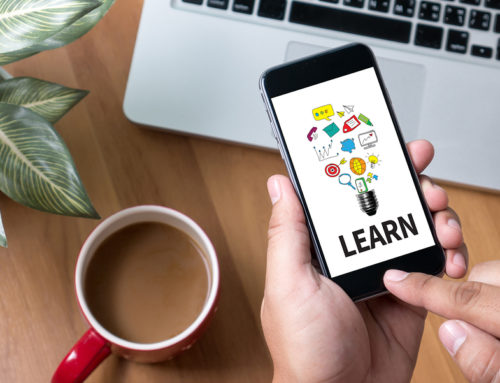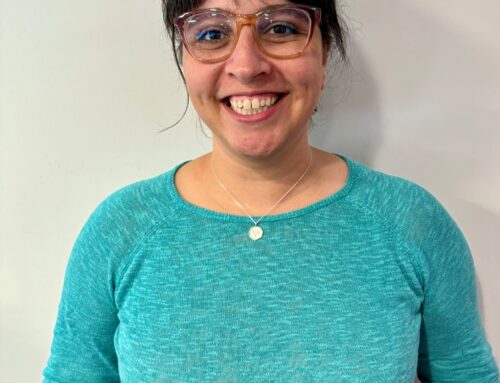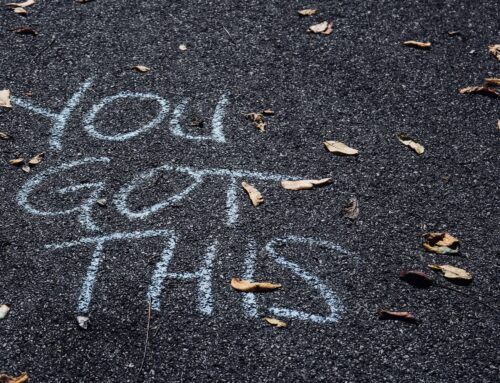Mark Zobel
Welcome to the latest installment in our series on the “Day in the Life” of nonprofit communicators! This series lets you describe your workday in your own words.
We’d love to feature YOU in this series! Don’t be shy – tell us what you do in a typical day as a nonprofit communications pro.
Dr. Mark Zobel is the Director of Annual Giving at Blackburn College in Carlinville, Illinois, where he also holds an adjunct faculty appointment, teaching an introductory course in philanthropy. He is a husband and father, who enjoys vegetable gardening, vegetarian cooking, and is also a lapsed classical guitarist on the road to recovery. In his spare time, he checks to make sure the earth is orbiting around the sun correctly, making minor adjustments here and there, keeping us all on track. You’re welcome!
And this is his typical day:
Before 8:00 a.m. – I start my days around 5:00 am. Following the example of people like Michael Hyatt, Cal Newport, and David Allen among others, I begin with a set routine designed to jumpstart my day. This includes things like recording my weight, BP, sleep hours, and other health-related measurements in my iPhone’s health app, drinking a huge glass of water, spending some brief time in prayer and reading the day’s readings for Mass.
I spend a few minutes writing in the 5-Minute Journal app on my iPhone, and then I exercise for the day. I finish out the routine by making a large smoothie for breakfast, showering and getting dressed.
Then it’s out the door by around 7:45 am.
8:00 a.m. to 10:00 a.m – My commute to work lasts about 45 minutes, which is just long enough to get through a podcast episode or two, or a chapter in an audiobook. Right now, I’m listening to Greg McKeown read from his book Essentialism: The Disciplined Pursuit of Less.
I generally arrive at work around 8:30 and, as with the morning routine, I also have a workday startup routine. This is a ten-point checklist of seemingly mundane and innocuous things that, if overlooked, could potentially cause problems later. This includes things like scanning any emails that came in overnight (I empty my inbox each day before going home) for anything urgent, and doing the same with voicemail.
With that checklist complete, I turn my attention to the Daily Gift Report with all the gifts and corresponding receipt letters that were processed and generated the previous day. Here again, I have a twenty-point checklist where I make sure each gift is accounted for and receipted properly. I pull out the receipts to first-time donors, as they get a separate receipt and new donor welcome message. I scan for anything unusual, spikes in giving, lifetime giving thresholds, and anything that might suggest a donor is ready to be transferred into a Development Officer’s portfolio. I then turn over the receipts to our student workers for processing and mailing.
Once the Daily Gift Report checklist is complete, I launch into what Michael Hyatt refers to as “the big three.” These are the three most important tasks I need to complete today, things I decided on the night before. Even if I accomplish nothing else all day, the completion of the big three will mean success, because these were the things that mattered most. Today’s big three included (1) developing the marketing concept for our next direct mail appeal that will drop in mid-August (2) strategic planning for FY ’19 via the development of a Marketing Impact Chart for each of the donors in my portfolio, and (3) finalizing my portion of our department’s strategic plan for FY ’19.
On this particular day, I met with one of my direct reports for our weekly meeting, which I refer to as the “Alumni Relations Roundup.” Typically, this meeting happens on Thursday afternoons, but changing circumstances last week forced us to bump it to today. This is a weekly check-in where I get updated on the status of various projects, and where I can offer advice and feedback.
10:00 a.m. to 12:00 p.m. – I continue to work on my big three during this period, but I do stop around 10:30 to process email. I process email only twice a day and I do not check it at other times. Assuming I ended the previous day with an empty inbox, and most days I do get there, the process goes fairly quickly. Checking at 10:30 also gives everyone time to get into work and send me whatever they are going to send me.
I process email using David Allen’s 2-minute rule. If a particular email is actionable and can be wrapped up in 2 minutes or less, I handle it right then and there. If is going to take longer than that, then I set up a task in my task management app (currently 2Do, by Beehive Innovations), and schedule a block of time to deal with it later. Then into the archives it goes, and I go back to my big three.
12:00 p.m. to 2:00 p.m. – I do make a point to step away from my desk for lunch, and at several other times throughout the day. I am lucky to work at a small college, and a stroll around campus 2-3 times a day really helps break things up.
Every other Monday during this period I continue with, and try to finish, my big three, then turning to other tasks I have set up in 2Do. On the alternating Mondays, the entire advancement team meets from 1:30 to 3:30. These are mostly planning and problem-solving sessions.
2:00 p.m. to 4:00 p.m. – I am a morning person, so by this time of the day, my energy is beginning to wane. I account for this, though, by putting my big three up front in the morning, so by this point I’m either finishing them up, or moving on to the other, less critical, but still necessary tasks in 2Do.
After the big three, I try to schedule no more than 6-7 things, because that is about all that I can reasonably expect to do, given other things that crop up during the day, (i.e. office drop-ins from colleagues or alumni, phone calls, the boss, etc.).
After 4:00 p.m. – The last hour of the day for me is from 4:00 to 5:00 and this where I have yet another checklist for my workday shutdown ritual. This is the period where I shut my door and put up my do not disturb sign. This is sacred time, where I collect everything I accumulated during the day, and process it all.
I empty my email inbox and voicemail inbox – again according to the two minute rule, I add to and update all my various lists, (e.g., waiting for, on hold, read/review, etc.). Using the 2-minute rule, I empty my campus mailbox and physical in-tray.
Then, I assess the tasks I had set for the day, mark them as completed, deferred, canceled, delegated, or whatever the case may be. Then I look at tomorrow’s tasks relative to my calendar to make sure I am not scheduling too much.
Finally, I assess what tomorrow’s big three are going to be, and make a note of that in 2Do. From there, it’s a matter of packing my bag and locking up. In his book, Deep Work, Cal Newport talks about his own shutdown ritual, and how at the very end of it he will actually says “shutdown complete.” I have adopted this practice and included a double knock on my office door, just as I step away. It really does help reinforce the fact that I am CHOOSING to be done for the day. Everything else has been processed, accounted for, and scheduled, and so there is nothing gnawing away at me as I step out of the office. Now comes the discipline.
I make it a point to not check email in the evenings. I’ve gotten a lot better at this in recent years, but it was struggle at first. I have had to learn the hard way, though, that unless you set limits and boundaries, you work will take over everything, and that’s no way to live.
And yes, you guessed it… I do have an evening routine as well. My evenings are spent with family, and friends, going out or staying in as the case may be, but once all of that is done, I do have one final little checklist designed to set me up for a restful night’s sleep.
I know it may seem to some that I might be overly mechanical or obsessive with all my lists and routines, but the reality is that I have learned how easy it is for me to drift into ill health and disorganization if I do not act intentionally. A priest I once knew told me this, “take care of the order, and the order will take care of you.” That is so true.
Thanks for sharing your day, Mark!
Want to be featured in this series? Tell us what you do in a typical day as a nonprofit communications pro.





